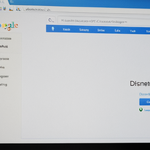
Google Chrome has become one of the most widely used web browsers globally, but the proliferation of online advertisements has made ad blocking increasingly important for users seeking faster browsing, enhanced privacy, and protection from malicious content. This comprehensive analysis examines the multifaceted approaches available to Chrome users for blocking advertisements, from built-in browser features to sophisticated third-party extensions, while addressing the significant technological shifts reshaping the ad-blocking landscape. The current ad-blocking ecosystem on Chrome reflects a complex interplay between user demands for cleaner browsing experiences, the economic interests of content publishers, and browser security considerations, particularly following Google’s transition to Manifest V3, which fundamentally alters how extensions interact with web content.
Understanding the Ad Blocking Ecosystem on Google Chrome
The motivations behind ad blocking have evolved significantly in recent years, reflecting broader changes in how users perceive their digital experience and online privacy. Research from 2025 reveals that approximately 42.7 percent of internet users worldwide now employ ad blockers, with usage rates even higher in specific demographics and geographic regions. Within the United States, nearly one-third of Americans, specifically 32.2 percent, use ad blockers, with desktop usage reaching 37 percent, indicating particularly high adoption on traditional computers. The demographic breakdown shows significant variation, with men more likely to block ads compared to women, at rates of 49 percent versus 33 percent respectively. The generational divide also remains notable, with younger users aged eighteen to twenty-four showing adoption rates of 41 percent compared to 32 percent among Baby Boomers, though this gap continues to narrow as older demographic cohorts recognize the value of ad blocking technology.
The reasons users implement ad-blocking solutions extend beyond simple convenience. Privacy concerns rank prominently in users’ decision-making, with approximately 31 percent of United States adults reporting that they block ads specifically to avoid tracking. The desire for faster browsing speeds motivates 71 percent of users who want to eliminate banner advertisements, while 41 percent cite speed improvements as a primary reason. These motivations reflect the genuine performance impact that advertisements have on modern web browsing, as ads consume significant bandwidth, processing power, and system resources. The consequences for advertisers and publishers have been substantial, with the industry experiencing approximately $54 billion in lost advertising revenue in 2024, representing roughly 8 percent of total digital advertising spend. However, despite this significant revenue loss, the global digital advertising market continues to demonstrate resilience and growth, valued at $549.51 billion in 2022 and projected to reach $870.85 billion by 2027.
Chrome’s Built-in Ad Blocking Features
Google has implemented native ad-blocking functionality directly within the Chrome browser, representing a recognition of user demand for cleaner browsing experiences while adhering to industry standards for acceptable advertising. Chrome’s built-in intrusive ad blocker operates by automatically blocking advertisements that fail to meet the standards established by the Coalition for Better Ads, an industry initiative aimed at improving user experiences by discouraging particularly disruptive advertisement formats. When Chrome blocks intrusive advertisements, users receive a notification in the address bar stating “Intrusive ads blocked,” providing transparency regarding the browser’s protective actions. This built-in functionality specifically addresses what Google and industry experts classify as intrusive advertising, including excessive numbers of advertisements on a single page, visually disruptive advertisements featuring flashing graphics or autoplaying audio, and ad walls that prevent users from accessing content without watching or interacting with advertisements.
The process for enabling Chrome’s built-in ad blocker involves navigating through the browser’s settings interface. Users must access the Chrome settings menu, typically found in the top right corner of the browser window, then proceed to Privacy and Security settings followed by Site Settings. Within Site Settings, users can locate the section labeled “Additional content settings” and specifically select the “Intrusive ads” option. Once in this menu, users can choose their default setting, which allows them to either block intrusive advertisements across all websites or permit advertisements globally. For users who wish to have more granular control, Chrome provides the ability to manage ad permissions on a per-site basis, allowing individuals to whitelist specific websites they trust or wish to support while maintaining ad blocking on other sites.
Despite the availability of Chrome’s built-in ad blocker, this feature has significant limitations that have prompted many users to supplement or replace it with more comprehensive third-party solutions. The built-in blocker focuses specifically on preventing intrusive or misleading advertisements rather than blocking all advertisements, meaning users will continue to see what Chrome classifies as “legitimate” text, image, and video advertisements across the web, including on platforms like YouTube. This approach represents a compromise position that acknowledges the economic model underlying much of the free web while attempting to preserve user experience by eliminating the most egregious advertising formats. The limitation of this native functionality has driven approximately 60 million users to download third-party ad blocker extensions, with some of the most popular options including AdBlock, used by over 60 million users worldwide, and uBlock Origin, which has accumulated over 10 million active users on Chrome alone.
Pop-up and Redirect Blocking in Chrome
Pop-up advertisements and unwanted redirects represent a particularly problematic category of online disruption that Chrome addresses through a dedicated built-in pop-up blocker. By default, Google Chrome blocks pop-ups from automatically displaying on user screens, providing an important baseline level of protection. When Chrome successfully blocks pop-ups, the address bar displays a notification indicating that pop-ups have been blocked, allowing users to verify that the browser is performing its protective function. Pop-ups pose particular security concerns beyond their disruptive nature, as they can serve as vectors for phishing attempts, malware distribution, and other malicious activities, making their blocking a critical security feature.
Users have the flexibility to customize Chrome’s pop-up blocking behavior through the browser’s settings interface. To access these controls, users navigate to the Chrome menu, select Settings, proceed to Privacy and Security, and then locate Site Settings followed by Pop-ups and Redirects. Within this menu, users can choose their default setting, with the recommended option being “Don’t allow sites to send pop-ups or use redirects,” which maintains baseline protection. However, Chrome also allows users to manage pop-up permissions on a per-site basis, enabling them to temporarily or permanently allow pop-ups from websites they trust or where pop-ups provide legitimate functionality. Additionally, if users have subscribed to receive notifications from websites, these browser notifications can continue to display even with pop-up blocking enabled, requiring users to separately manage notification permissions if they wish to eliminate all pop-up-like disruptions.
Comprehensive Third-Party Ad Blocker Extensions for Chrome
The limitations of Chrome’s native ad-blocking features have fostered a thriving ecosystem of third-party extensions designed to provide more comprehensive, customizable, and powerful ad-blocking capabilities. These extensions represent diverse approaches to filtering web content, from traditional rule-based blocking to algorithmic learning systems that identify tracking patterns. Understanding the landscape of available options is essential for users seeking to select a solution that best matches their specific needs and technical comfort level.
uBlock Origin: The Open-Source Standard
uBlock Origin has established itself as a leading choice among privacy-conscious and technically sophisticated users, earning recognition as the top-performing ad blocker in multiple independent evaluations. Developed by Raymond Hill and maintained through open-source collaboration, uBlock Origin distinguishes itself through its commitment to CPU and memory efficiency as a primary design consideration. The extension utilizes substantially fewer system resources compared to competing solutions, while simultaneously providing more powerful and flexible filtering capabilities than most alternatives. In independent testing, uBlock Origin demonstrated exceptional performance, earning perfect scores of 100/100 on AdBlock Tester, successfully blocking all types of tested advertisements including contextual advertising, banner advertisements, analytics tools, and error monitoring services.
uBlock Origin’s power derives from its advanced filtering system, which employs a sophisticated rule-based approach allowing users to create custom filters using regular expressions and wildcard syntax. This flexibility enables technically proficient users to craft highly specific blocking rules targeting particular types of unwanted content, while the extension ships with multiple pre-configured filter lists that effectively block most common advertisements and trackers without requiring user customization. The extension supports both whitelisting and blacklisting features, providing users with granular control over which elements to block and which to allow. For users who want complete control over their ad-blocking experience, uBlock Origin offers configuration options that allow blocking of ads and unwanted images, videos, and other page elements that might clutter the web browsing experience.
However, users should be aware that uBlock Origin has experienced significant challenges following Google’s implementation of Manifest V3, the new extension framework discussed extensively below. On Chrome, uBlock Origin has been superseded by uBlock Origin Lite, which operates under the more restrictive capabilities imposed by Manifest V3. In testing, uBlock Origin Lite demonstrated respectable performance with an AdBlock Tester score of 96/100 and confirmed capability to block YouTube ads, though it failed all three Cover Your Tracks tests for tracker blocking, indicating reduced privacy protection compared to the original Manifest V2 version. For users seeking the full capabilities of uBlock Origin, switching to Firefox, which continues to support Manifest V2 extensions, provides access to the unrestricted feature set.
AdGuard: Comprehensive Multi-Platform Solution
AdGuard represents another dominant player in the ad-blocking market, offering browser extensions compatible with Chrome and other major browsers, along with system-wide applications for Windows, macOS, Android, and iOS. The extension provides sophisticated filtering capabilities addressing multiple categories of web content disruption. AdGuard blocks all types of advertisements including video ads on YouTube, rich media advertisements, unwanted pop-ups, banner advertisements, and text advertisements. Beyond ad blocking, AdGuard implements tracking protection through its dedicated tracking protection filter, which contains more than 10,000 filtering rules specifically designed to prevent third-party tracking systems from monitoring user behavior. This tracking protection database exceeds the tracking databases maintained by popular privacy extensions like Ghostery and Disconnect, providing comprehensive privacy coverage.
AdGuard has demonstrated particular effectiveness in adapting to Manifest V3 restrictions. In comparative testing of Manifest V3-compliant extensions, AdGuard achieved a perfect score of 100/100 on AdBlock Tester while also performing well on Cover Your Tracks tests, achieving 2.5/3, indicating that it continues to block tracking advertisements and invisible trackers even under the more restrictive Manifest V3 framework. These test results indicate that AdGuard has successfully optimized its filtering rules to provide robust protection within the technical constraints imposed by Google’s new extension platform. The extension also provides social media widget removal capabilities, allowing users to disable “Like” buttons and similar tracking-enabled widgets that may infest frequently visited web pages.
Ghostery: Privacy-Focused Tracker Blocking
Ghostery has garnered significant adoption with over 100 million downloads, positioning itself as a privacy-focused extension that emphasizes transparency regarding online tracking mechanisms. Unlike some ad blockers that prioritize blocking all advertisements indiscriminately, Ghostery takes a more sophisticated approach that combines ad blocking with detailed transparency about the trackers operating on websites. The extension blocks advertisements across multiple platforms including YouTube and Facebook, while simultaneously stopping trackers from collecting personal data. Ghostery maintains what it describes as the largest database of trackers in the world, updated rapidly and reliably to reflect emerging tracking technologies.
One of Ghostery’s distinctive features involves providing detailed information about trackers encountered on visited websites, including the number of trackers, their specific type, and the company operating them. This transparency approach educates users about the surveillance occurring during their web browsing while providing immediate protection through blocking. The extension also automatically removes intrusive cookie consent pop-ups and expresses dissent to online tracking through user preference signals. However, like other ad blockers, Ghostery has faced challenges with Manifest V3, as the restrictive rule framework limits the advanced anti-tracking protection the extension provided under Manifest V2. The extension continues to function and receive updates to optimize performance within these limitations, but users switching to Firefox or Safari can access more comprehensive anti-tracking capabilities.
AdBlock and Adblock Plus: User-Friendly Options
AdBlock has established itself as one of the most widely adopted ad blockers, trusted by over 60 million users worldwide. The extension provides comprehensive ad-blocking functionality that addresses disruptive pop-ups, banners, and video advertisements across websites including Facebook, YouTube, and other major platforms. AdBlock distinguishes itself through its user-friendly interface and set-it-and-forget-it approach, wherein the extension automatically begins blocking annoying and intrusive ads immediately upon installation without requiring configuration. The extension also offers customization options for users who desire more granular control, including advanced filters, allowlists for websites they wish to support, and dark mode options for the extension interface.
Adblock Plus, developed as an open-source project with over 100 million active users, takes a distinctive philosophical approach to ad blocking through its Acceptable Ads program. By default, Adblock Plus enables the Acceptable Ads feature, which allows certain non-intrusive advertisements to display while blocking annoying and intrusive content. This approach reflects the perspective that sustainable web advertising is compatible with user experience when advertisements adhere to reasonable standards regarding format, placement, and intrusiveness. Users can easily disable the Acceptable Ads feature at any time if they prefer comprehensive ad blocking without exceptions. In testing comparing Adblock Plus with uBlock Origin, Adblock Plus Free achieved an AdBlock Tester score of 88/100, while the premium version achieved 100/100, demonstrating respectable performance that improves significantly with the subscription offering.

Manifest V3 and the Future of Ad Blocking on Chrome
Google’s transition from Manifest V2 to Manifest V3 represents perhaps the most significant technical development in the ad-blocking landscape in recent years, fundamentally altering how browser extensions can interact with web content and network requests. Announced in 2019 but facing numerous delays in implementation, the Manifest V3 transition officially commenced on June 3, 2024, and has profound implications for the effectiveness and functionality of ad blockers on Chrome and Chromium-based browsers. Understanding Manifest V3’s technical changes and their consequences is essential for users seeking to navigate the evolving ad-blocking landscape.
Technical Changes Implemented by Manifest V3
Manifest V3 introduces several significant architectural changes to the Chrome extensions platform, ostensibly designed to enhance security, performance, and privacy. The framework reduces the permissions available to extensions, limiting their access to browser data and functionality compared to Manifest V2. Rather than allowing extensions to maintain persistent background pages that continuously monitor and modify browser activity, Manifest V3 requires extensions to employ service workers that operate more efficiently and consume fewer resources. Most significantly for ad blockers, Manifest V3 replaces the webRequest API, which ad blockers historically relied upon to intercept and block network requests before they reached their destination, with the Declarative Net Request API (DNR).
The DNR API represents a fundamentally different approach to content filtering that has profound implications for ad-blocking effectiveness. Rather than allowing extensions to dynamically intercept each request and make real-time decisions about blocking or allowing it, the DNR API requires extensions to specify a fixed set of predefined rules in JSON format that Chrome applies automatically. This shift from dynamic to declarative filtering substantially reduces extension flexibility and the ability to apply complex, context-dependent filtering logic. Chrome imposes strict limitations on the number of rules available to extensions under Manifest V3, restricting each extension to 30,000 built-in blocking rules plus an additional shared limit that can reach approximately 330,000 if the ad blocker is the only filter extension installed. Extensions can also maintain 30,000 updatable rules for more flexible filtering. These numerical limits may appear substantial but prove inadequate for comprehensive ad blocking, considering that uBlock Origin relies on approximately 300,000 rules to block all types of ads and trackers.
Consequences for Existing Ad Blockers
The practical implications of these technical changes have created significant disruption in the ad-blocking ecosystem. uBlock Origin, which historically commanded a devoted user base exceeding 10 million users on Chrome, became permanently disabled on the platform, with Google preventing installation of the original Manifest V2 version. This forced transition has proven particularly frustrating for users who invested in learning uBlock Origin’s advanced filtering capabilities and preferred its superior resource efficiency and filtering comprehensiveness. The electronic Frontier Foundation and numerous privacy organizations have vocally criticized Manifest V3, with the EFF noting that the transition “will restrict the capabilities of web extensions—especially those designed to monitor, modify, and compute alongside the conversation your browser has with the websites you visit,” resulting in “greatly reduced capabilities” for privacy-protective extensions, particularly concerning given that Google maintains tracking infrastructure on approximately 75 percent of the top one million websites.
Different ad blockers have responded to Manifest V3 with varying strategies. Adblock Plus released a Manifest V3-compliant version in May 2024, though the transition resulted in reduced user base from approximately 44 million in late 2024 to around 37 million by January 2025, with the user base subsequently declining further. This pattern suggests that some users have migrated to alternative solutions or abandoned ad blocking entirely in response to reduced effectiveness on Manifest V3. AdGuard initially faced disruptions during the transition but has recovered relatively well, maintaining a user base around 14-15 million throughout the transition period. AdGuard’s resilience appears attributable to its aggressive optimization efforts and development of differential filter updates that maintain blocking accuracy despite Manifest V3 constraints.
Manifest V3 Test Results and Performance Analysis
Independent testing of Manifest V3-compliant extensions provides concrete evidence regarding the real-world impact on ad-blocking effectiveness. Testing of AdGuard and uBlock Origin Lite revealed that both extensions achieved perfect AdBlock Tester scores of 100/100 and 96/100 respectively after enabling all available filters within the extension settings. This indicates that despite Manifest V3 restrictions, these extensions can still block the majority of tested advertisements when properly configured. Both extensions continued to successfully block YouTube advertisements even under Manifest V3 constraints. However, the Cover Your Tracks testing revealed important differences, with only AdGuard successfully blocking trackers and providing protection against tracking ads and invisible trackers, achieving 2.5/3, while uBlock Origin Lite failed all three Cover Your Tracks tests. This disparity suggests that while basic ad blocking may remain functional under Manifest V3, advanced privacy features like tracker blocking have suffered particularly significant degradation.
Installation and Configuration of Ad Blockers on Chrome
Implementing an ad blocker on Google Chrome is a relatively straightforward process that most users can accomplish within minutes. The process begins with accessing the Chrome Web Store, which users can locate by navigating to the web address chromewebstore.google.com or by searching for “Chrome Web Store” in a search engine. Once on the Chrome Web Store homepage, users search for their preferred ad blocker extension using the search functionality. Upon finding the desired extension, typically identified by star ratings indicating user satisfaction and installation counts demonstrating popularity, users click the “Add to Chrome” button. A confirmation dialog then appears requesting permission to install the extension, with users clicking “Add extension” to complete the installation.
After successful installation, the extension icon typically appears in the browser toolbar in the upper right corner, allowing users to access the extension’s settings and controls with a single click. For users who wish to maintain quick access to the extension without cluttering the toolbar, most extensions can be pinned directly to the toolbar or hidden in the extensions menu. Once an extension is active, it typically begins blocking advertisements immediately without requiring additional configuration for basic functionality. However, most comprehensive ad blockers offer additional settings that users can customize to fine-tune their ad-blocking experience. These customization options typically include the ability to whitelist (or more contemporary terminology, allowlist) specific websites on which users wish to see advertisements, perhaps to support content creators whose work they appreciate, or to prevent breaking website functionality that sometimes depends on ad-serving infrastructure.
Whitelisting and Allowlisting Websites
Most modern ad blockers recognize that users may desire selective ad blocking, maintaining the ability to support specific content creators or ensuring compatibility with websites that require advertising infrastructure. The terminology around this feature has evolved, with the industry shifting from “whitelist” to “allowlist” to reflect more inclusive language conventions, though many resources still reference both terms interchangeably. The process for allowlisting websites varies slightly depending on the specific ad blocker but generally follows a consistent pattern. For most extensions, users click the ad blocker icon in their browser toolbar, which opens a menu or popup interface displaying options to manage that specific website’s blocking status. Users can typically find an option to “pause on this site,” “don’t run on pages on this domain,” or “disable protection on this website,” depending on the specific extension’s terminology.
For Adblock Plus specifically, users can access the allowlist through the extension’s settings menu by clicking the settings icon, then navigating to the “Allowlisted websites” tab, where they can add website URLs and click “Add website” to include them in the allowlist. Adblock Plus implements smart allowlisting, whereby websites added to the allowlist remain on it for seven days, and if the user revisits the site within that timeframe, the allowlist extends for another seven days, while sites not revisited within seven days are automatically removed. This approach balances the user’s apparent intention to support certain sites without permanent modifications to settings. For uBlock Origin and similar extensions, users typically click the extension icon and toggle the large power button to disable filtering for that specific page. The flexibility to allowlist websites on a per-site basis represents an important feature for users who wish to support content creators while maintaining robust ad blocking across the remainder of the web.
Specialized Solutions and Alternative Approaches
Beyond browser extensions, users seeking comprehensive ad blocking have access to additional solutions operating at different layers of the network stack, providing varying benefits and trade-offs.
Network-Level Ad Blocking with Pi-hole and AdGuard Home
Network-level ad blocking solutions like Pi-hole and AdGuard Home operate at the domain name system (DNS) level, blocking advertising and tracking domains before requests ever reach a user’s browser. These solutions function by intercepting DNS queries made by devices on a network and redirecting requests for known advertising or tracking domains to a null IP address, preventing the browser from ever connecting to advertisement servers. Pi-hole represents an open-source project that users can deploy on dedicated hardware or virtual machines, typically running on affordable platforms like Raspberry Pi, allowing it to protect all devices on a home network simultaneously. Once installed and configured as the network’s DNS server, Pi-hole blocks advertisements across all connected devices, including smart televisions, mobile devices, gaming consoles, and Internet of Things devices that might not support traditional browser-based ad blockers.
AdGuard Home provides similar functionality with additional features including built-in DHCP server capabilities, query logging, and long-term statistics about network activity. Both solutions offer web interfaces for managing blocklists, viewing statistics about blocked queries, and fine-tuning privacy settings. These network-level approaches offer comprehensive protection but require more technical knowledge to implement and maintain, as they involve modifying network configuration rather than simply installing a browser extension. However, for users comfortable with network administration, these solutions provide the most comprehensive protection across all devices and applications on a network.

Brave Browser: Built-in Ad Blocking
Some users may prefer to switch browsers entirely rather than installing ad-blocking extensions, particularly considering that some ad blockers face limitations under Manifest V3. The Brave browser represents a notable alternative, built on the open-source Chromium engine that powers Chrome but incorporating dozens of privacy features and built-in ad blocking that Chrome lacks. Brave blocks advertisements and trackers by default, providing users with an ad-free browsing experience without requiring installation of separate extensions. This default ad blocking makes Brave considerably faster and more private than Chrome, saving RAM, CPU, and battery life, particularly on mobile devices where resource constraints are more pronounced.
Brave’s performance advantages derive substantially from its comprehensive privacy protections, which block nearly every attempt to track users through cookies, trackers, and other surveillance mechanisms. Unlike Chrome, which functions as an advertising platform designed to maximize data collection for targeted ads, Brave has been engineered with privacy as a foundational principle. Users can access any Chrome extension from the Chrome Web Store within Brave, providing flexibility if they wish to install additional privacy tools, though Brave’s built-in protections prove comprehensive enough that many users find additional extensions unnecessary. For YouTube specifically, Brave blocks video advertisements by default, eliminating the need for separate YouTube ad blocker extensions. While Brave represents a more fundamental choice than simply installing an ad blocker extension, it appeals to users seeking comprehensive privacy protection without ongoing extension management.
Privacy, Security, and Performance Considerations
The decision to implement ad blocking on Chrome extends beyond simple convenience, encompassing important privacy, security, and performance implications.
Privacy Protection and Tracker Blocking
Online advertisers employ sophisticated tracking mechanisms to monitor user behavior across websites, creating detailed profiles of individuals’ interests, behaviors, and vulnerabilities that enable hyper-targeted advertising. Many ad blockers incorporate dedicated tracker blocking capabilities that prevent these surveillance mechanisms from operating. Privacy Badger, developed by the Electronic Frontier Foundation, specifically focuses on algorithmic tracker detection rather than traditional rule-based ad blocking. The extension observes tracker behavior across websites and automatically learns to block trackers that appear to be monitoring users across multiple sites without consent. This algorithmic approach differs from traditional ad blockers that rely on curated lists of known trackers, providing a more adaptive defense against emerging surveillance techniques.
The privacy benefits of ad blocking extend beyond preventing tracking, as advertisements frequently serve as vectors for malware, phishing attempts, and scareware that compromise device security. Researchers have consistently demonstrated that advertisements can harbor malicious code, and by preventing ad loading, ad blockers substantially reduce exposure to these threats. Additionally, ad blockers prevent advertisers from accessing browsing history and personal information through tracking scripts, reducing the likelihood of data being sold to third parties or used for purposes beyond the original advertising intent.
Performance and Energy Efficiency
Scientific research investigating ad blocker impact on system performance reveals that ad blockers can produce substantial performance benefits, particularly on multimedia-heavy websites. A study examining power consumption while using various ad blockers found that uBlock Origin and uBlock Origin Lite provided the most efficient power consumption reduction, with uBlock Origin reducing CPU power consumption by approximately 26.8 percent on multimedia websites like 9gag and reducing GPU power consumption by approximately 57.7 percent on Ubuntu systems. These efficiency gains result from ad blockers preventing the loading and processing of advertisement content, reducing the computational burden on systems and allowing them to direct resources toward actual content the user wishes to access. On average, ad blockers like AdBlock Plus and uBlock Origin Lite reduce power consumption on multimedia websites by approximately 40 percent.
The practical implications for users involve faster page loading times and reduced bandwidth consumption, particularly on mobile devices where network constraints are more pressing. By preventing advertisement loading, ad blockers reduce the volume of data that must be transmitted and processed, allowing web pages to load more quickly and conserving mobile data plans. Studies consistently demonstrate that pages load approximately twice as fast with ad blockers enabled compared to unblocked browsing. For users on limited data plans or connecting through slower networks, these performance improvements translate to meaningful quality-of-life enhancements.
The Acceptable Ads Initiative
Recognition that the advertising industry requires some revenue to sustain free web content has motivated the development of the Acceptable Ads program, wherein ad blockers allow certain non-intrusive advertisements to display while blocking disruptive formats. Acceptable Ads must comply with specific criteria established by the Acceptable Ads Committee, including requirements that advertisements not obstruct primary content, clearly identify themselves as advertisements, not employ autoplaying audio, and not utilize aggressive or misleading design. Websites meeting these standards can join the Acceptable Ads program and have their advertisements whitelisted in participating ad blockers. This approach represents a compromise attempting to balance user experience with the economic necessities of digital publishing. However, some users prefer completely blocking all advertisements regardless of format, finding that even “acceptable” ads represent unwanted disruption. Most ad blockers providing this feature enable it by default but allow users to disable it entirely if they prefer comprehensive blocking.
Recent Trends and the Evolving Ad Blocking Landscape
The ad-blocking ecosystem continues to evolve rapidly in response to technological changes and shifting user behavior patterns. Usage statistics indicate that mobile ad blocking has surpassed desktop ad blocking for the first time, with 54.4 percent of ad blocker users now accessing these tools on mobile devices compared to 45.6 percent on desktop. This shift reflects broader trends toward mobile-first internet usage, particularly in emerging markets. Mobile-first regions lead adoption, with 40.6 percent of Indonesians, 38.1 percent of Vietnamese, and 38.5 percent of Chinese internet users employing ad blockers. These regional variations suggest that ad blocking will continue growing in importance as internet usage expands in developing regions with potentially more aggressive advertising environments.
Additionally, the industry has observed increasing adoption of privacy-focused browsers with built-in ad blocking rather than separate extensions. Brave and DuckDuckGo represent emerging alternatives attracting users who prioritize comprehensive privacy protection alongside ad blocking, shifting preference toward integrated solutions rather than modular extensions. This trend suggests that future ad-blocking approaches may increasingly emphasize browser-level integration rather than extension architecture, potentially providing more robust protection even as extension frameworks become more restricted.
Troubleshooting Common Ad Blocker Issues
Despite the general effectiveness of ad blockers, users occasionally encounter situations where advertisements continue appearing or websites malfunction with ad blockers enabled. These issues can typically be resolved through troubleshooting steps tailored to the specific cause.
When ads continue appearing despite ad blocker installation, users should first verify that the extension is actually enabled. Many extensions can be accidentally disabled through the extensions menu, and simply toggling them back on resolves the issue. Users can access their extensions by clicking the puzzle piece icon in the toolbar or navigating to Settings followed by Extensions and Manage Extensions. If the extension is enabled but advertisements still appear, updating the extension filter lists often resolves the issue, as filter developers continuously update rules to address new advertising techniques. Most ad blockers provide an option to update filters manually or automatically update at regular intervals.
For website functionality problems attributed to ad blockers, users can temporarily disable the extension on that specific website through allowlisting, which frequently resolves issues where website functionality depends on ad-serving infrastructure or cookies placed by advertisement networks. If a website remains non-functional even with the ad blocker disabled, the issue likely stems from other causes rather than ad blocking itself. Some websites aggressively detect ad blockers and display warning messages or prevent access entirely until ad blockers are disabled. In these situations, users can employ private browsing mode or use alternative browsers less likely to be detected by anti-adblock scripts.
Your Ad-Free Chrome, Achieved
The landscape of ad blocking on Google Chrome has become increasingly complex and multifaceted, reflecting the ongoing tension between user desires for clean, fast, private browsing experiences and the economic models underlying the free web. Users now face multiple options ranging from Chrome’s built-in intrusive ad blocker to sophisticated third-party extensions like uBlock Origin, AdGuard, and Ghostery, each offering varying degrees of protection, customization, and resource efficiency. The transition to Manifest V3 represents a pivotal moment in this evolution, fundamentally altering the technical capabilities available to ad blockers while promoting broader browser security and privacy goals.
For users seeking to block ads on Chrome, the optimal solution depends on their specific priorities and technical comfort level. Users prioritizing maximum ad-blocking effectiveness with minimal resource consumption should consider uBlock Origin on Firefox, or if remaining on Chrome, investigate Manifest V3-compliant alternatives like AdGuard or uBlock Origin Lite, understanding the performance trade-offs this entails. Users desiring comprehensive ad blocking integrated into their browser rather than managed through extensions should explore alternatives like Brave, which provides built-in protection without ongoing extension management. Users seeking network-level protection across all home devices should investigate Pi-hole or AdGuard Home, accepting the additional technical complexity required for these solutions.
The future of ad blocking on Chrome likely involves continued evolution as Google and the broader browser ecosystem respond to Manifest V3’s challenges and unforeseen technical limitations emerge. Users should remain informed about developments in this space, as regulatory pressures, technological advances, and shifting industry practices may create new opportunities or challenges for ad blockers. Ultimately, the choice to block advertisements represents a personal decision reflecting individual priorities regarding privacy, security, performance, and support for web content creators, and fortunately, the contemporary ecosystem provides options accommodating diverse preferences and technical sophistication levels.
Protect Your Digital Life with Activate Security
Get 14 powerful security tools in one comprehensive suite. VPN, antivirus, password manager, dark web monitoring, and more.
Get Protected Now





